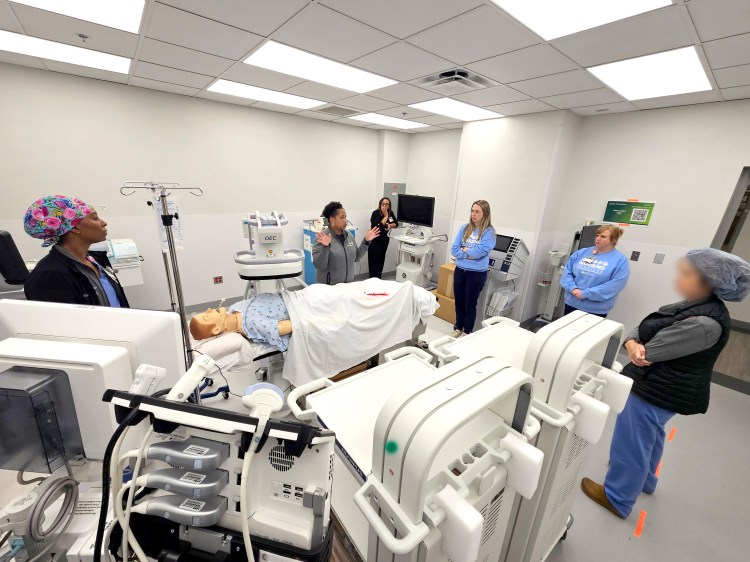Clinical Simulation tests space, emergency response in new bronchoscopy suites

When it comes to testing new clinical spaces, UAB Clinical Simulation is the perfect fit.
This happened to be the literal case when Anyet Belyeu, senior nursing director for UAB Medicine’s Digestive Health Services and Endoscopic Services, enlisted Clin Sim for a systems simulation in UAB Hospital Jefferson Tower’s new sixth-floor bronchoscopy suites.
“There was recognition from the clinical teams involved that the pulmonary patients would be a new patient population undergoing surgical procedures with anesthesia outside of the OR,” Belyeu said, adding that the simulation was requested to assist with identifying gaps and barriers to providing this new level of care in a new space. “There was recognition that we wanted to ensure all teams were prepared for emergency situations, should that need arise in the space.”
Belyeu intended to identify those potential gaps prior to beginning procedures, thus preventing any delays in care and any negative outcomes related to lack of preparation or knowledge.
In turn, an interprofessional simulation was developed in collaboration with UAB Clinical Simulation, ambulatory leadership, nursing leadership, anesthesia departmental leadership, mechanical circulatory support and facilities, with participants also including individuals from the Medical Emergency Team and ECMO team.
Specifically, the simulation tested cardiopulmonary resuscitation and extracorporeal membranous oxygenation—emergencies considered to be the highest risk with the lowest occurrence for that particular area—in order to help alleviate potential blind spots prior to the space’s opening.
Ultimately, the simulation helped staff identify, discuss and plan for access to necessary equipment and team communication strategies, ensuring that the new environment is conducive to the treatment of adult patients. Further, the sim highlighted the opportunity to document processes for the treatment of patients. As a result, leadership was able to confirm that the space allows for effective emergency treatment.
“The simulation was very beneficial to our team,” Belyeu said. “It was also extremely helpful to walk through scenarios to identify our blind spots to prevent a delay of care. The collaboration of involving everyone upfront felt very comfortable and safe to identify gaps and develop solutions.”
To learn how simulation can assist your department or team, email simulation@uabmc.edu.
UAB Medicine’s Clinical Simulation program offers opportunities for individuals and teams across UAB Medicine and beyond to practice before they deliver care. We encourage all who provide and support patient care to “Sim First.” Together, we can put our patients’ safety first.




0 Comments